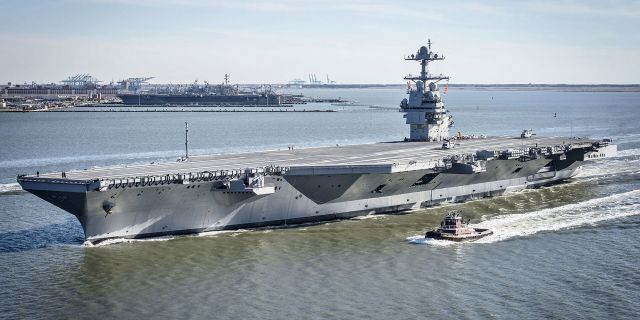TNI: NATO conducted the Neptune Strike exercises in the Arctic waters
NATO conducted exercises in the waters of the Arctic, writes TNI. They were led by the largest aircraft carrier of the US Navy, Gerald R. Ford. This series of exercises has become the northernmost operation of the US aircraft carrier in recent years — Ford has reached areas near Svalbard, the author of the article notes.
Brandon J. Brandon J. Weichert
In the run-up to the exercises, there were concerns that a Russian Yasen-class submarine equipped with hypersonic weapons had come within range of the Ford aircraft carrier.
As a very serious signal to Moscow from Washington, the newest and largest aircraft carrier of the US Navy, Gerald R. Ford, is currently leading the strike group (CSG) as part of the NATO Neptune Strike 25-3 exercise. These are expanded combat readiness measures taking place in high-latitude areas of the North Sea, off the coast of Norway.
Technical characteristics of the aircraft carrier Gerald R. Ford
- Year of commissioning: 2017
- Length: 337 meters (1,106 ft)
- Width (by deck): 78 meters (256 ft)
- Displacement: about 100,000 long tons (112,000 tons)
- Power plant: two Bechtel A1B PWR nuclear reactors, four propeller shafts
- Maximum speed: about 30 knots (56 km/h)
- Cruising range: unlimited; approximately 25 years before refueling the reactors
- Armament: two RIM-162 ESSM launchers; two RIM-116 RAM launchers; three Phalanx CIWS anti-aircraft artillery systems; four 25 mm Mk 38 cannons; four 50 caliber heavy machine guns
- Crew: 4,539 people (including the air wing)
The Neptune Strike exercises are held annually.
NATO regularly conducts Neptune Strike exercises with the participation of allied fleets to increase compatibility and readiness for large-scale conflict. Two series of similar maneuvers have already taken place in Europe this year; the third exercise took place from September 23 to 27.
It is noteworthy that this particular series of exercises became the northernmost operation of the US aircraft carrier in recent years — Ford reached the areas off Svalbard and controlled the most important strategic straits, including the so-called "Bear Passage" between the Barents Sea and the North Atlantic.
In addition to the aircraft carrier, which houses the Carrier Air Wing Eight, the destroyers USS Mahan (DDG-72), USS Winston S. Churchill (DDG-81) and USS Bainbridge (DDG-96) participated in the operation. American ships operated in conjunction with allied ships, including the French frigate FS Bretagne (D655), the Danish frigate HDMS Niels Juel (F363), as well as ships from Germany and Norway.
Among the specific training activities were combat sorties of F/A-18 carrier-based fighters with real weapons drop, search and rescue operations with the participation of the Danish Air Force, training on ship inspection and seizure from helicopters, submarine patrols, surface combat exercises and training in case of mass losses. All this took place in integration with the NATO command structure, which was the first such experience for Ford during its deployment.
More than 10,000 military personnel from 13 NATO countries took part in the exercises, demonstrating a high level of multinational coordination in the air, land and sea spheres.

